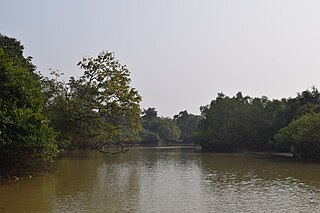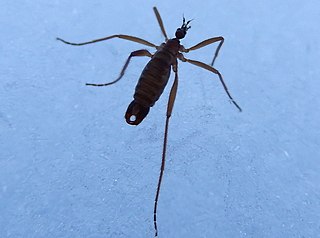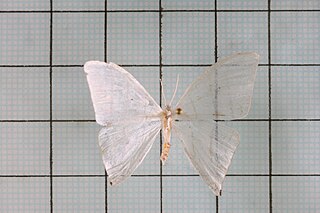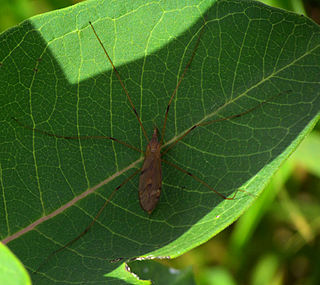
Bhitarkanika Mangroves is a mangrove wetland in Odisha, India, covering an area of 650 km (400 mi) in the Brahmani and Baitarani river deltas.

The Limoniinae are a paraphyletic assemblage of genera within the crane flies, Tipulidae, although they can usually be distinguished by the way the wings are held at rest. Limoniines usually hold/fold the wings along the back of the body, whereas other tipulids usually hold them out at right angles. Snow flies such as Chionea scita have no wings at all. Limoniines are also usually smaller than other tipulids, with some exceptions. Limoniinae are a very large assemblage with nearly 10500 described species in 133 genera, and were historically treated as a subfamily, but their classification is in flux; numerous authors recently treated the group at the rank of family, but subsequent phylogenetic analyses revealed that the remaining groups of tipulids render the group paraphyletic. These flies are found in damp places throughout the world, and many species form dense swarms in suitable habitats.

Chionea is a genus of wingless limoniid crane flies. It consists of two subgenera, the holarctic Chionea and palaearctic Sphaeconophilus. About 40 species are currently recognized in the northern hemisphere, but there are probably several undescribed species. They are commonly called snow flies.

Ditrigona is a genus of moths belonging to the subfamily Drepaninae. The genus was erected by Frederic Moore in 1888.
Asota chionea is a moth of the family Erebidae first described by Paul Mabille in 1878. It is found in Zaire.
Monardella stoneana is a rare species of flowering plant in the mint family known by the common name Jennifer's monardella.

Eriopterini is a tribe of limoniid crane flies in the family Limoniidae. There are more than 20 genera and 3,800 described species in Eriopterini.
Chionea scita is a species of crane fly in the family Limoniidae. C. scita is known as a type of snow crane fly because it is commonly seen walking on piles of snow during the winter months. These flies are also often observed in caves and heavily wooded areas. C. scita flies are small, hairy, wingless, and somewhat spider-like in appearance, unlike other flies.
Chionea alexandriana is a species of limoniid crane fly in the family Limoniidae.
Triarius trivittatus is a species of skeletonizing leaf beetle in the family Chrysomelidae. It is found in North America.
Chionea obtusa is a species of limoniid crane fly in the family Limoniidae.
Chionea albertensis is a species of limoniid crane fly in the family Limoniidae.
Chionea valga, the snow fly, is a species of limoniid crane fly in the family Limoniidae.
Spilomyia foxleei is a species of syrphid fly in the family Syrphidae.
Ectecephala laticornis is a species of grass fly in the family Chloropidae.
Gymnocarena bicolor is a species of fruit fly in the family Tephritidae.
Opilioacarus texanus is a species of mite in the family Opilioacaridae.
Aradus implanus is a species of flat bug in the family Aradidae. It is found in North America.
Nausigaster texana is a species of syrphid fly in the family Syrphidae.
Chionea carolus is a species of limoniid crane fly in the family Limoniidae.




